Example(a): For the FIR filter of size N = 7 with impulse response h(n) let h(n) = h(N-1-n). Denotes that the filter has a linear phase characteristic. (b) Repeat for N = 8.
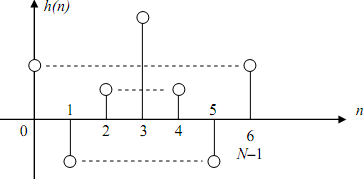
Solution (a) For N = 7, the positive symmetry relation h(n) = h(N-1-n) tends to h(n) = h(6-n) which defines that h(0) = h(6), h(1) = h(5), and h(2) = h(4), as given in figure above.
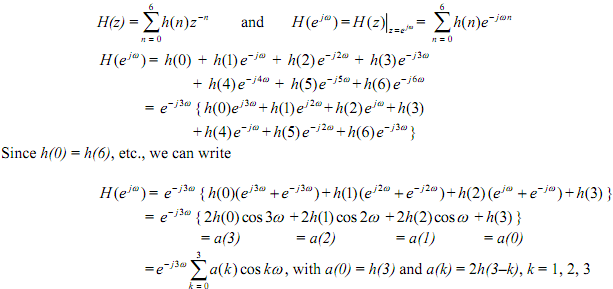
The coefficients, usually, are shown by


 where
where  The phase result is obviously k = 0 linear, with slope = -3 = - (N- 1)/2 which seems that the delay is an integer number of samples.
The phase result is obviously k = 0 linear, with slope = -3 = - (N- 1)/2 which seems that the delay is an integer number of samples.
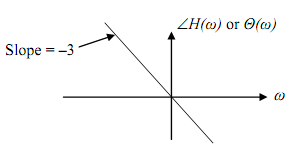
(b) For N = 8, the positive symmetry relation h(n) = h(N-1-n) leads to h(n) = h(7-n), which means h(0) = h(7), h(1) = h(6), h(2) = h(5), and h(3) = h(4) as shown in figure below.
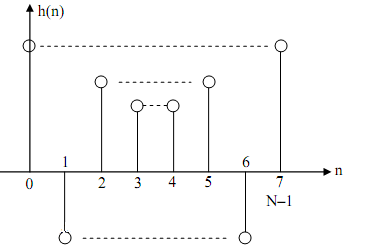
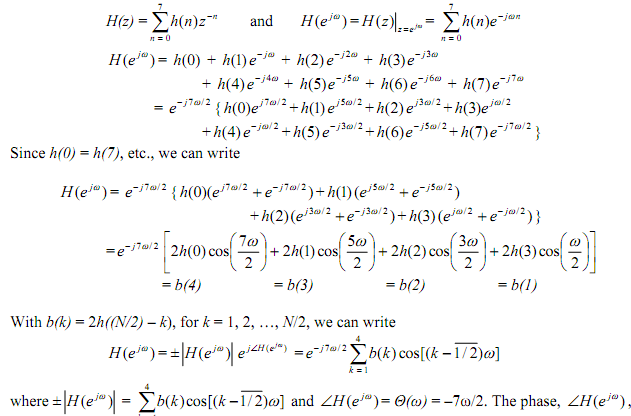
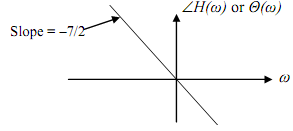
is mainly linear. However, the slope of the phase curve is (-7/2), which is not an integer. The non-integer transfer will cause the values of the sequence to be modified, which, in some cases, can be undesirable.
Email based Example of Frequency response assignment help - Example of Frequency response homework help at Expertsmind
Are you finding answers for Example of Frequency response based questions? Ask Example of Frequency response questions and get answers from qualified and experienced Digital signal processing tutors anytime from anywhere 24x7. We at www.expertsmind.com offer Example of Frequency response assignment help -Example of Frequency response homework help and Digital signal processing problem's solution with step by step procedure.
Why Expertsmind for Digital signal processing assignment help service
1. higher degree holder and experienced tutors
2. Punctuality and responsibility of work
3. Quality solution with 100% plagiarism free answers
4. On Time Delivery
5. Privacy of information and details
6. Excellence in solving Digital signal processing queries in excels and word format.
7. Best tutoring assistance 24x7 hours